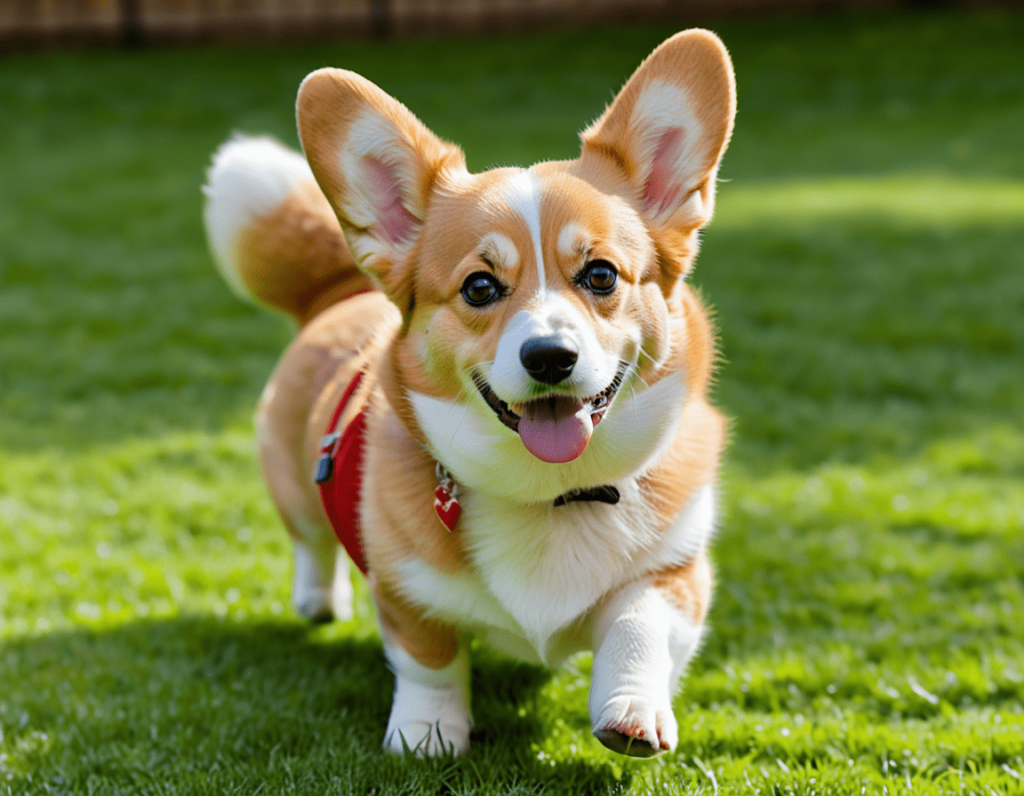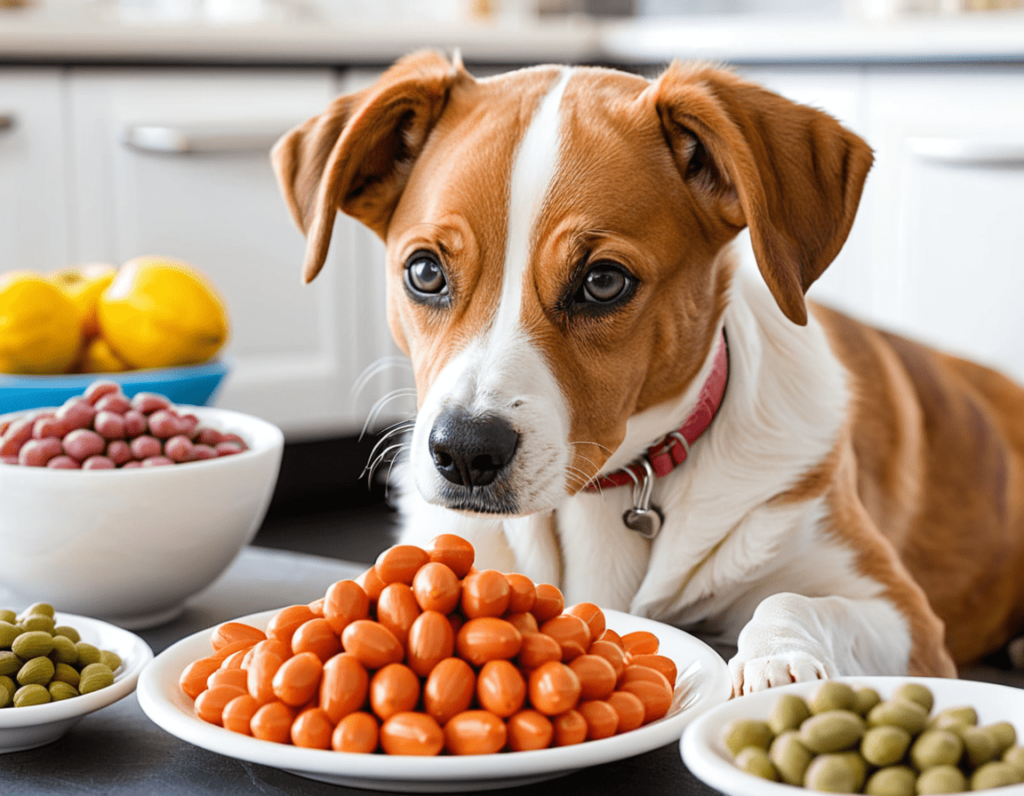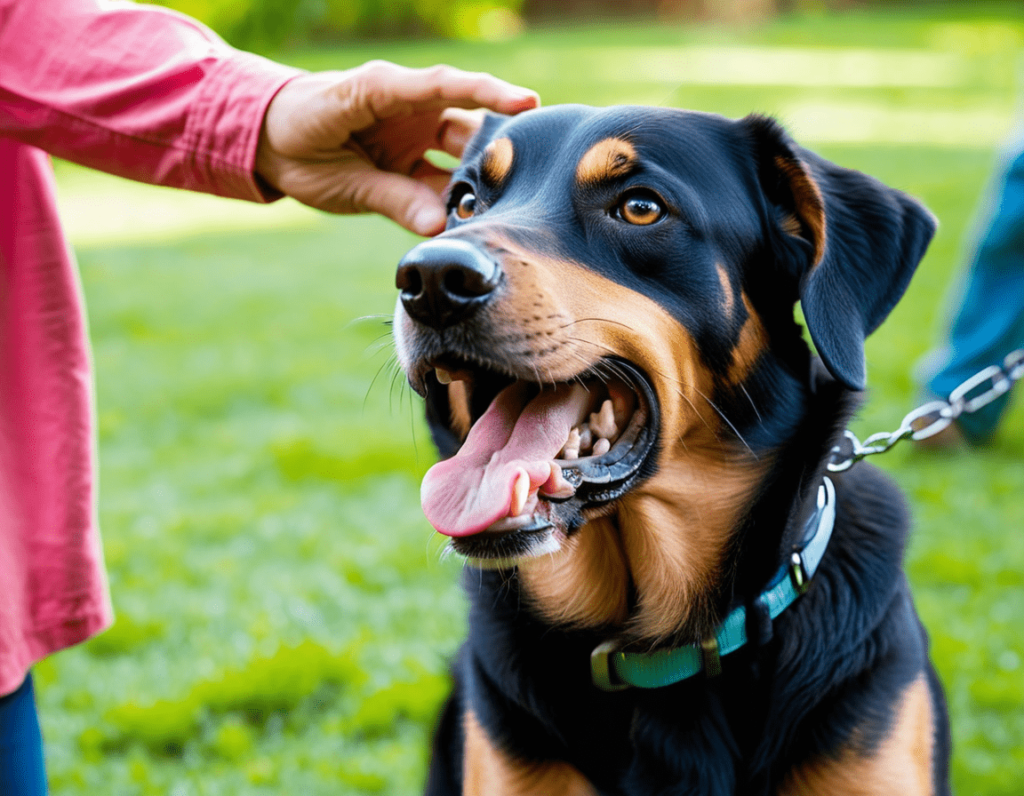
How to Deal with Aggressive Behavior in Dogs: A Paws-on Guide
We love our furry friends, but sometimes they can act like a bit of a “ruff” character. Aggressive behaviour in dogs can be concerning for both the dog and their human companions. Whether it’s barking, growling, or even snapping, understanding how to manage aggression is essential for a happy, harmonious household. In this article, we’ll explore practical tips to help you deal with aggressive behaviour in dogs, all while keeping it light and entertaining!
Understanding Aggression in Dogs
First things first: understanding why your dog is acting aggressively is crucial. Aggression can stem from various reasons, including fear, anxiety, territoriality, or pain. Think of it this way: if someone were to poke you unexpectedly, you might react defensively too! Dogs express their feelings through body language and vocalisations, so it’s important to pay attention.
Common Signs of Aggression
Before we dive into solutions, let’s look at some common signs of aggression in dogs:
- Growling: This can be a warning sign, like your dog saying, “Back off, buddy!”
- Barking: If your dog sounds like they’re auditioning for a doggy choir, it could be a sign of aggression.
- Snapping: A quick bite or snap can indicate that your dog feels threatened.
- Stiff body posture: If your dog looks like they just saw their ex at a party, they might be feeling aggressive.
Why Is Your Dog Acting This Way?
- Fear: A scared dog may act out to protect themselves. Imagine a dog in a Halloween costume—frightening!
- Territorial behavior: Dogs can be protective of their home and family, much like a tiny bouncer at an exclusive club.
- Pain or illness: Sometimes, aggression can signal that a dog is in pain. If they’re suddenly cranky, it might be time for a vet visit.
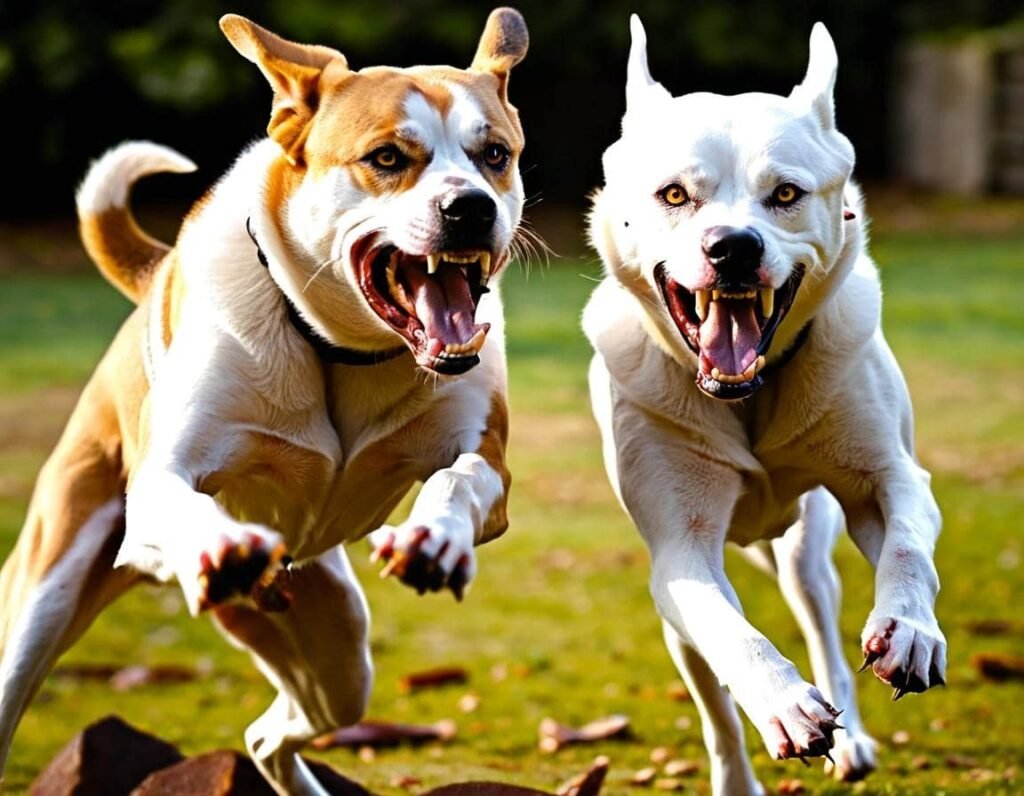
How to Deal with Aggressive Behaviour
1. Stay Calm
When your dog is acting aggressively, it’s essential to stay as calm as a cucumber. Dogs can pick up on your emotions, so if you’re panicking, they might just think, “Wow, this is serious! Time to freak out!” Take a deep breath and speak in a soft, soothing voice. You want to be the Zen master in this situation, not a frazzled squirrel.
2. Identify Triggers
Observe your dog’s behaviour and try to identify what triggers their aggression. Is it other dogs, loud noises, or strangers? Keeping a journal can help you track patterns. Once you know the triggers, you can work on addressing them. For example, if your dog is barking at the mailman, you might consider introducing them to a new “delivery person” (a.k.a., your friend in a funny costume) to ease the tension!
3. Socialization
Proper socialisation can work wonders for aggressive dogs. Gradually expose your dog to various environments, people, and other pets. Start slow—like a cautious tortoise approaching a pond! Positive experiences can help your dog learn that not all strangers are out to steal their toys. Treats and praise can encourage good behaviour, making your dog feel like they’re getting a “gold star” for being a good boy or girl!
4. Training and Commands
Teaching basic commands like “sit,” “stay,” and “leave it” can help you gain control over your dog in tense situations. It’s like giving them a superhero cape of obedience! Consider enrolling in a training class or working with a professional dog trainer. They can provide tailored strategies to help your pup learn to channel their inner calm.
5. Avoid Punishment
Punishing aggressive behaviour can escalate the problem. It’s like yelling at a dog for barking at the mailman—what do you think they’ll do next time? Instead, focus on redirecting their energy. If your dog starts to growl, distract them with a toy or treat. This technique is like giving them a shiny object to play with instead of dwelling on their anger.
6. Seek Professional Help
If your dog’s aggression is severe or doesn’t improve, don’t hesitate to reach out to a professional dog trainer or behaviorist. They can provide personalised guidance and help you understand your dog better. Remember, even the best dog whisperers started as students!
7. Create a Safe Space
Every dog deserves a sanctuary where they can feel safe and secure. Designate a specific area in your home as your dog’s “safe space.” This could be a cosy corner with their bed, some toys, and maybe even a blanket that smells like you. When they’re feeling overwhelmed, encourage them to retreat to this space. Think of it as their own little doggy getaway—a spa retreat, if you will!
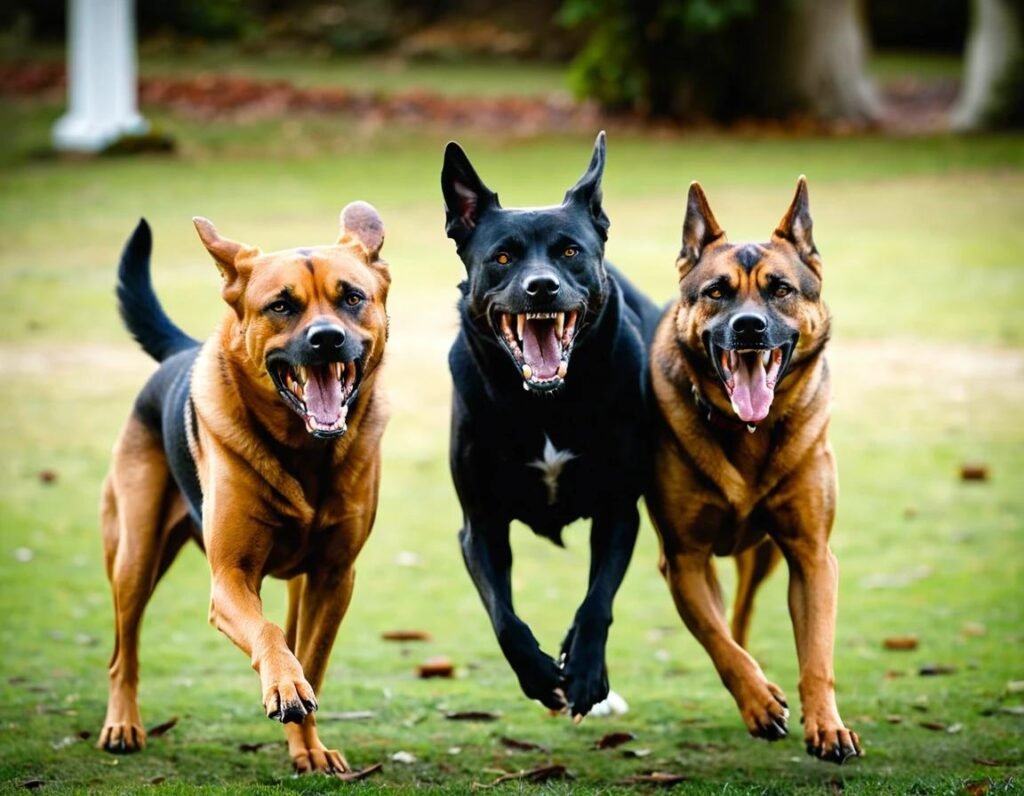
8. Positive Reinforcement
Positive reinforcement is your best friend when it comes to managing aggression. Reward your dog for calm behaviour with treats, praise, or playtime. If they behave well around a trigger (like a loud noise or another dog), shower them with affection. It’s like giving them a little pat on the back for being a rockstar! This will help them associate positive experiences with previously stressful situations.
9. Consistency is Key
Consistency in your training and behaviour management is essential. If you set rules, make sure everyone in the household follows them. Mixed signals can confuse your dog and lead to further aggressive behavior. Imagine trying to follow a recipe where the ingredients keep changing—it just wouldn’t work out well! Stick to your training plans, and your dog will appreciate the clarity.
10. Recognize When to Walk Away
Sometimes, the best option is to remove your dog from a potentially stressful situation. If you sense that your dog is becoming agitated or aggressive, calmly guide them away. This is not a sign of defeat; it’s a smart move to prevent escalation. It’s like knowing when to exit a movie that’s taking a turn for the scary—better safe than sorry.
11. Understand Body Language
Learning to read your dog’s body language can help you intervene before aggression escalates. Signs of discomfort can include:
- Ears pinned back
- Tail tucked
- Whining or whimpering
- Avoiding eye contact
Being able to identify these signs means you can step in and redirect your dog before they feel the need to act aggressively. It’s like being a doggy mind reader—your very own canine psychic!
12. Use Calming Aids
There are various calming aids available to help manage your dog’s anxiety and aggression. Products like calming collars, pheromone diffusers, or even certain supplements can promote relaxation. Just be sure to consult your veterinarian before introducing anything new. Think of it as giving your pup a relaxing spa treatment!
Final Thoughts
Aggression in dogs can be a complex issue, but with the right approach, it can be managed effectively. By staying calm, understanding the triggers, and using positive reinforcement, you can guide your dog toward more peaceful behavior. Remember, patience and consistency are vital in this journey.
And while it can be challenging, don’t forget to enjoy the journey with your furry companion. Each small victory deserves to be celebrated, whether it’s a successful training session or simply a peaceful moment shared on the couch.
Your dog is not just a pet; they are part of your family. With love, understanding, and a sprinkle of humour, you can turn that “ruff” behaviour into a wagging tail of happiness. So grab those treats, practice those commands, and let your dog know that together, you can tackle anything—even their “grumpy dog” moments!
Embrace the adventure of being a dog owner, and remember, every step you take helps to create a more loving and well-behaved companion. With time, patience, and a bit of laughter, you and your pup can navigate the world of aggression together, coming out stronger and closer on the other side!
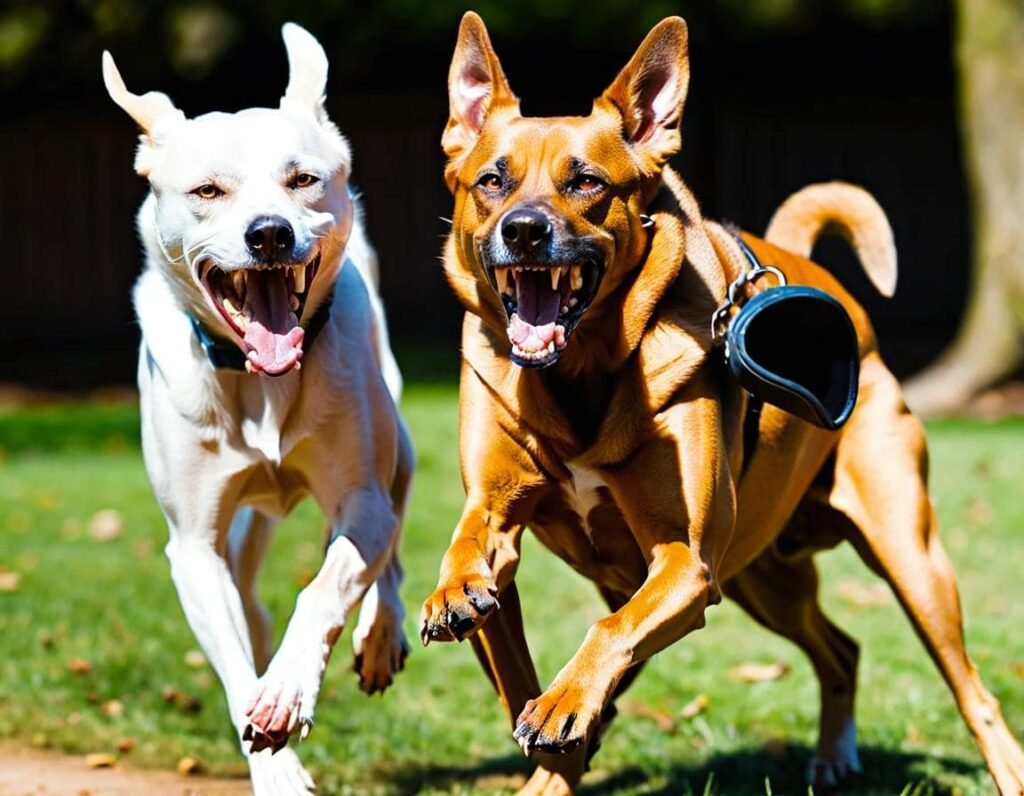
How to Deal with Aggressive Behavior in Dogs: FAQs
1. What causes aggression in dogs?
Answer: There are various calming aids available to help manage your dog’s anxiety and aggression. Products like calming collars, pheromone diffusers, or even certain supplements can promote relaxation. Just be sure to consult your veterinarian before introducing anything new. Think of it as giving your pup a relaxing spa treatment!
2. How can I tell if my dog is aggressive?
Answer: Signs of aggression can include:
- Growling or barking: vocalisations that indicate discomfort or warning.
- Snapping or biting: Quick movements toward a person or animal, often a sign of fear or frustration.
- Stiff body posture: A tense stance can indicate a dog is feeling threatened.
- Showing teeth: This can be a clear warning sign that your dog is not comfortable.
3. Is it safe to keep an aggressive dog?
Answer: Yes, it can be safe to keep an aggressive dog with proper training and management. However, it requires commitment to addressing the behavior. Consulting a professional trainer or behaviourist is often the best course of action to ensure safety for both the dog and those around them.
4. What should I do if my dog shows aggression toward other dogs?
Answer: If your dog shows aggression toward other dogs, it’s important to manage their exposure to other dogs while working on training. Gradual socialisation and positive reinforcement techniques can help. Consider enlisting the help of a professional trainer experienced in aggression management.
5. Can aggressive behaviour in dogs be fixed?
Answer: Yes, with time, patience, and consistent training, aggressive behaviour can often be managed and reduced. While some dogs may not completely overcome aggressive tendencies, many can learn to respond more calmly to their triggers.
6. Should I use punishment to correct aggressive behaviour?
Answer: No, punishment can escalate aggression and lead to further behavioural issues. Instead of punishment, focus on positive reinforcement, redirecting attention, and providing a safe environment for your dog.
7. How can I help my dog feel more secure?
Answer: Creating a safe space for your dog can help them feel more secure. This can include a quiet area with their bed, toys, and familiar scents. Additionally, consistent routines, training, and positive interactions can help build their confidence.
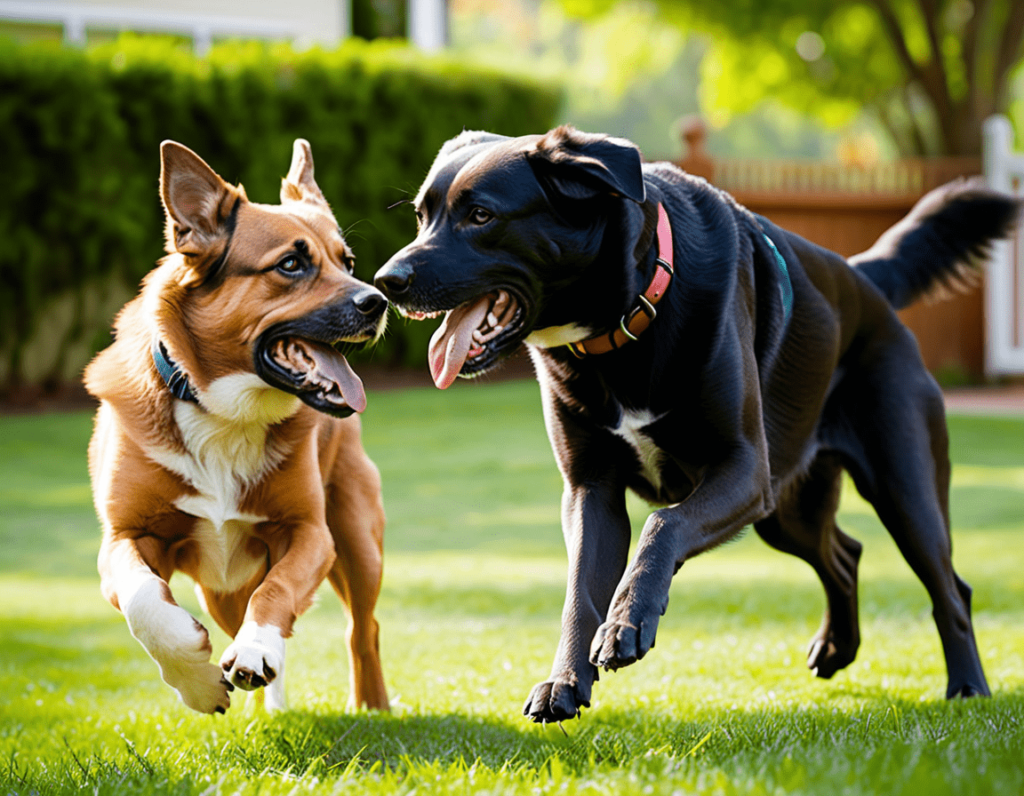
8. What are some signs my dog is anxious or fearful?
Answer: Signs of anxiety or fear in dogs can include:
- Whining or barking excessively
- Panting or pacing
- Hiding or trying to escape
- Submissive behaviors like rolling over or tucking their tail
9. Can medication help with my dog’s aggressive behaviour?
Answer: In some cases, medication prescribed by a veterinarian can help manage aggression or anxiety in dogs. This should be considered in conjunction with behavior modification techniques for the best results.
10. When should I seek professional help for my dog’s aggression?
Answer: If your dog displays severe aggression, poses a risk to themselves or others, or if their behaviour doesn’t improve with training, it’s time to seek help from a professional dog trainer or ehaviorist. They can provide personalised strategies and support to address your dog’s specific needs.
Conclusion
Understanding and managing aggressive behaviour in dogs can be challenging, but with the right approach, it is possible to foster a safe and harmonious environment. If you have more questions or concerns, don’t hesitate to reach out to professionals who can provide guidance tailored to your dog’s needs. Remember, patience and love are essential ingredients in helping your furry friend become their best self!

